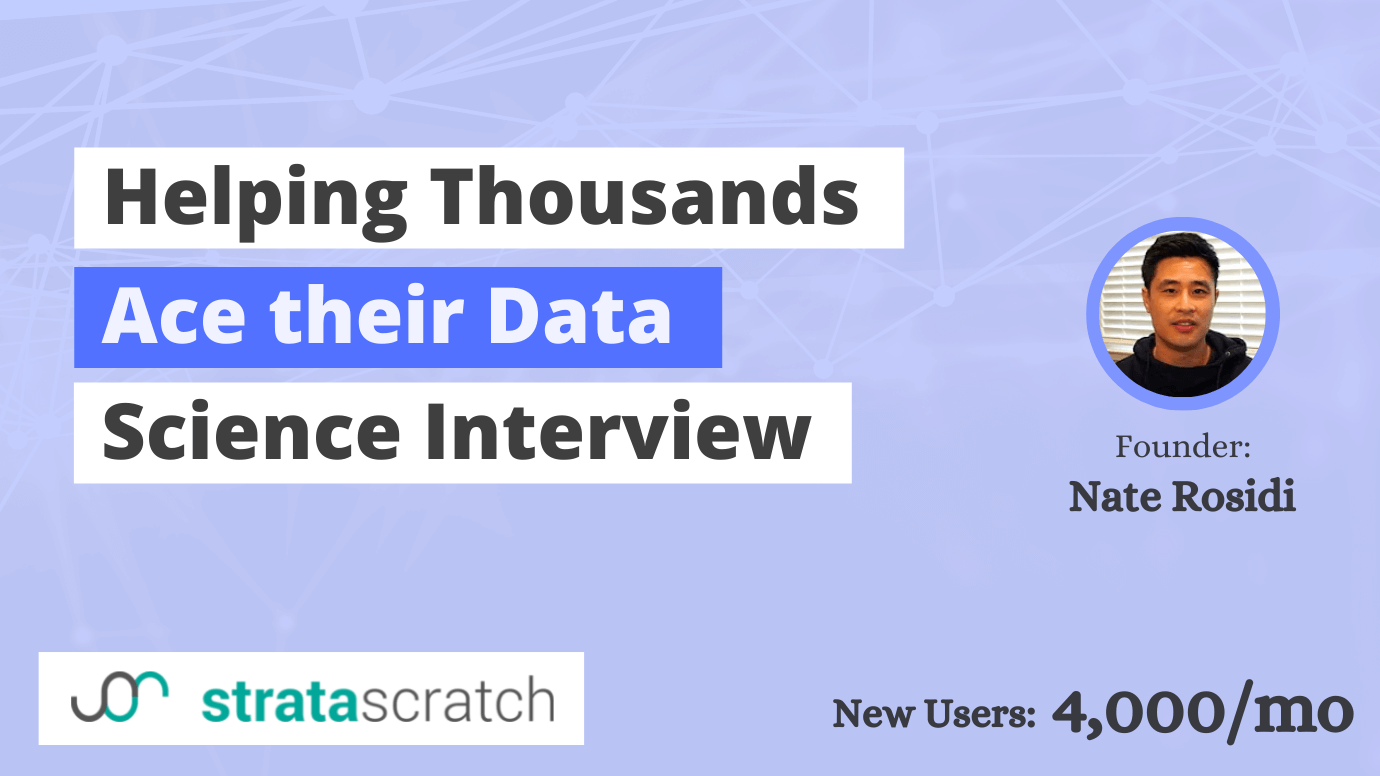Hi! Who are you, and what are you currently working on?
My name is Nate, and I’m a data scientist by training, and have had several stints as a data scientist in my career.
In addition, I’ve also dabbled in consulting, and more business type of stuff, like product management and product strategy.
I now work full time at a life sciences firm, primarily doing product strategy. I got hired as a data scientist, but switched roles a few years in.
In addition, I’m an adjunct professor, teaching business analytics at the University of San Francisco, and I run StrataScratch on the side.
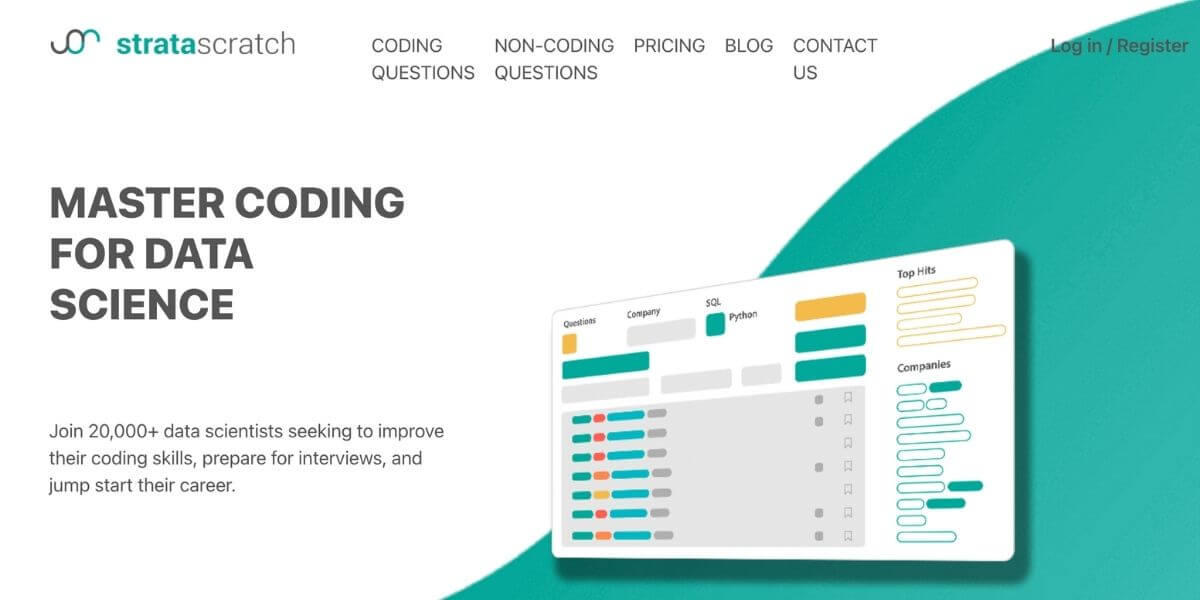
Strata Scratch is essentially a platform that allows aspiring data scientists to prepare for a career in data science as well as job interviews that they have coming up.
A few key features our platform offers:
- the gamut of interview prep materials
- questions from real interviews from people’s favorite companies with solutions
- the ability to code on the platform for anything coding related
What’s your background, and what inspired you to start your business venture?
The inspiration behind starting StrataScratch is two fold.
First, when I was going through interviews to become a data scientist, and using platforms like Leetcode, a lot of those problems didn’t translate that well into interview questions you would actually get as a data scientist.
LeetCode was great for practicing your SQL syntax. But the questions that were being asked were not reflective of what you’d be asked in data science interviews.
So I wanted to create a platform that was focused solely on data science, both on the coding and statistics side of things.
That was part of the inspiration – building something that the next generation could use, because I felt it was missing.
The second reason was more of a practical point, since I ended up teaching coding a lot of times as an adjunct professor at USF in my analytics classes.
Prior to StrataScratch, I didn’t have a great resource to give my students, and so I decided, this would be a good testing bed for the idea. I ended up sharing an early version with my students to see if they found it helpful.
So that was reason number two, to help build a great data science resource for my students.
How did you get started? What did the early days look like?
I started this project back in 2017. At that time, I built the MVP, showed it to my class, and then iterated off of that.
But during that year, we released StrataScratch as an MVP to the public as well. Over the course of those few years I wanted to get feedback on the platform itself.
I was trying to understand the users, who would be using it, and continue focusing on the core problem.
The early days were also focused on building a large database of technical questions. Today, we have about 1,000 questions, but it took a while to get to that many.
Those were the big things I was doing during the first few years. Once I had a solid understanding of that information, I redesigned the entire platform, based on all the user engagement we received.
I launched the redesign in June of 2021, and it was around that time the platform started exponentially growing.
Before that, it was just casually growing.
How have you grown your business venture?
The marketing strategy played a big part in accelerating growth.
Before I launched the version 1, I spent a long time trying to figure out what was going to unlock it. Such as updating the platform in hopes there would be one new feature that would unlock it.
Competitor Landscape
After trying that for a while with no luck, I took a look at my competitors. There were about 18 of them at the time.
I analyzed what made them all different, and where they were positioned in the data science or analytics space.
I wrote an article on Medium about my findings that sort of blew up, titled 18 Most Recommended Data Science Platforms to Learn Python and SQL.
That market research provided an in-depth understanding of their products and differentiating factors.
Building Trust with Video
From there, I studied their marketing strategies and tactics, and discovered most of the indie projects had really strong engagement on YouTube.
They posted videos about data science and coding tutorials.
I was pretty confident YouTube was a key strategy to their success, but still didn’t know exactly where it would lead for StrataScratch.
I decided to go for it anyway, and started filming one YouTube video a week for the next few months. Video topics included: how to use my platform, answering interview questions, and diving into coding problems.
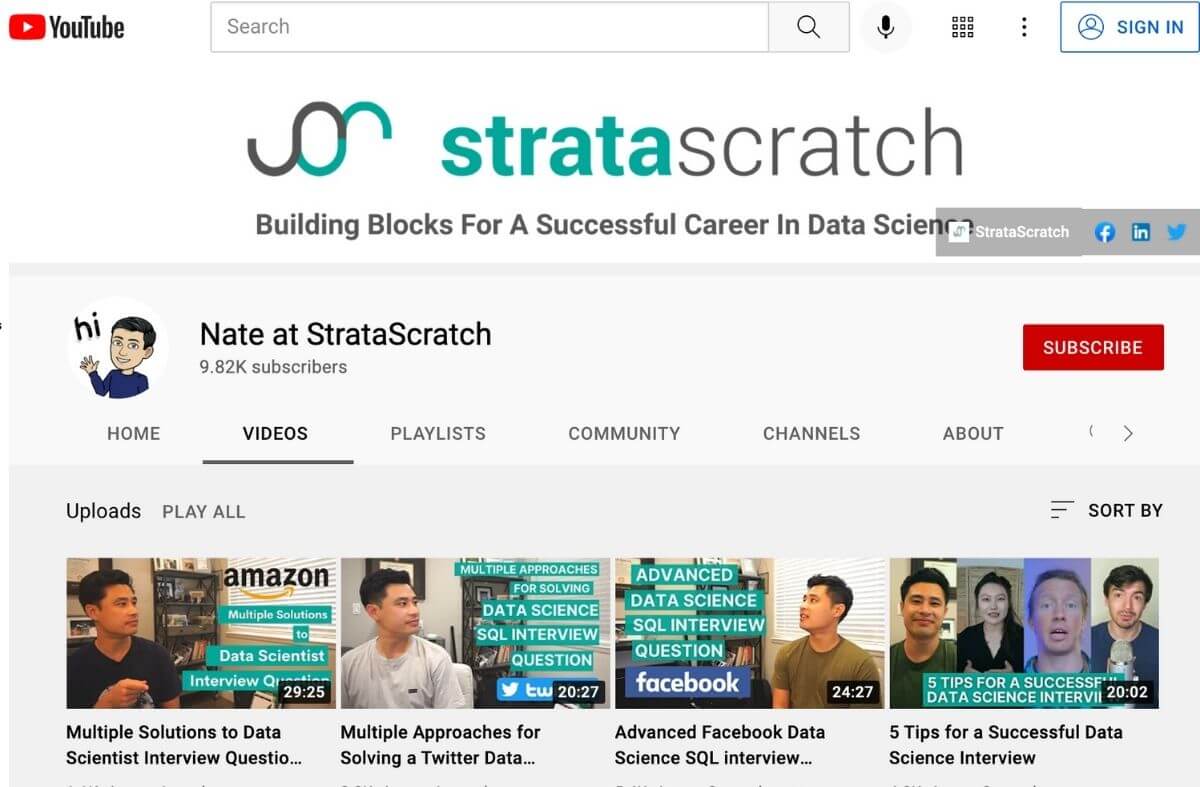
This helped build my name recognition in the data science space, and develop a sense of trust for StrataScratch users as well.
That is the strategy that unlocked it. I’m still uploading videos, but not on a weekly basis anymore.
It turns out YouTube also helped drive SEO unexpectedly, because people started to trickle into my site from videos as well.
Publishing Blog Posts
And then the second major driver was writing a ton of blog articles.
The majority of the content I publish includes technical guides about frameworks, and how to solve interview questions.
It’s not SEO fluff, but topics that people who are going through interviews actually want to know. So the choice of topics and publishing frequency (around 15 per month) helped grow the platform.
Today, I’m at 50,000 visitors on my website per month, which is 10x more visits than what we had 10 months ago.
So a key driver was definitely all the blog articles being published. They were also consistently being shared across social media channels which helped too.
Those are the two channels that I focused on in terms of marketing. I didn’t want to spread myself too thin and focus on too many things.
In fact, I think it was actually beneficial to be limited on time and a little bit on project capital, because it allowed me to slow down, and be very focused and conscious on the two channels that I thought would work.
What is 1 small but powerful tactic you implemented that helped you achieve success? How did it make a difference?
If you ask 10 people how to find product market fit, you’re going to get 10 different answers. It’s pretty difficult to quantify product market fit, but it’s still a very important business metric.
To me, product market fit is more of a feeling than anything else, and ultimately the market will suck you in if you build something that truly resonates with your audience.
A while back I read a First Round article by a company called Superhuman, where they shared a framework to find product market fit.
The approach leveraged a four-question survey, and the main question was something like, “how disappointed would you be if [Insert Company Name] was no longer available?”
If 40% or more are very disappointed, then you have product market fit.
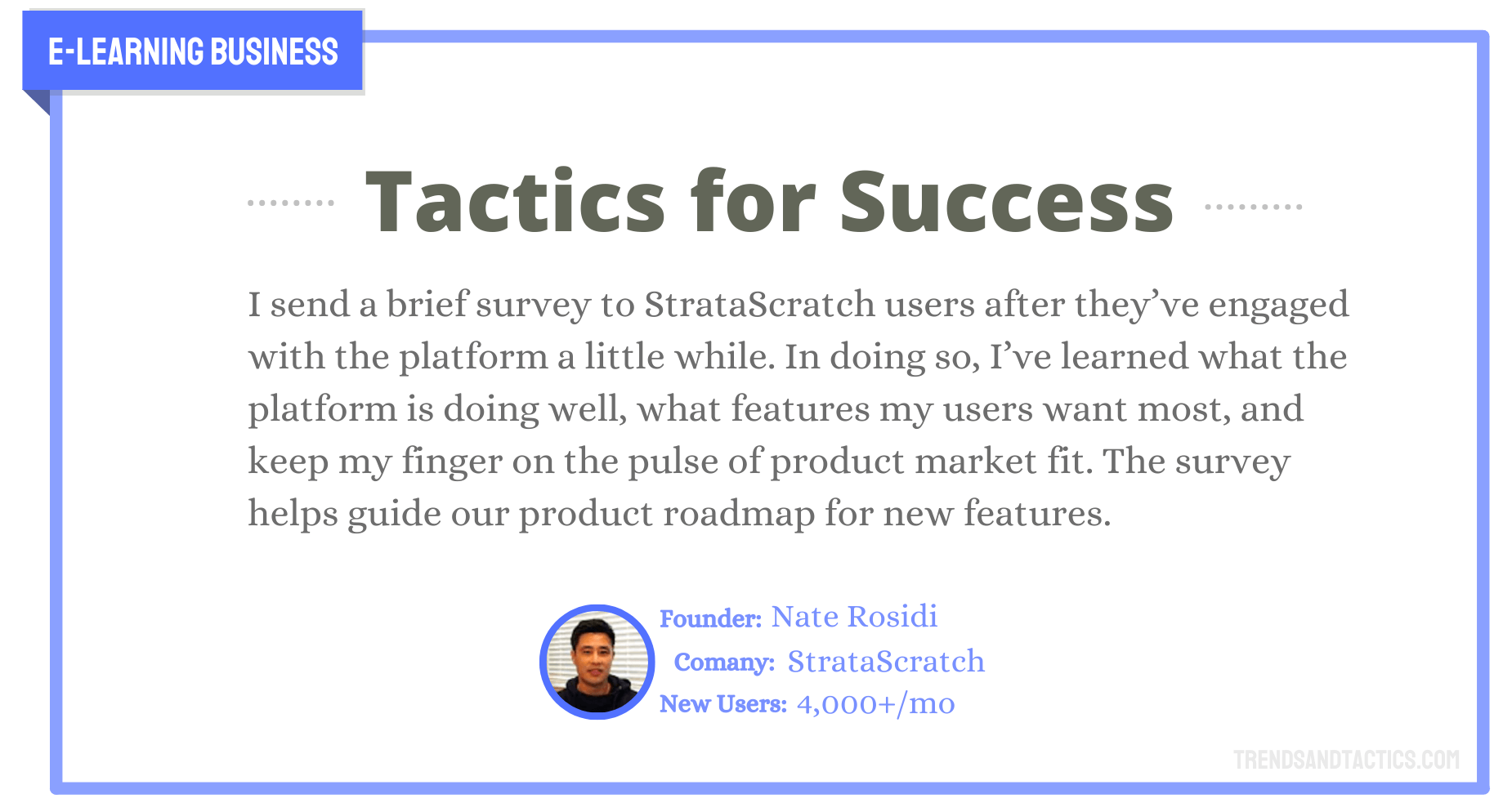
What is 1 of the biggest challenges you faced during your business journey, and how did you overcome it?
The biggest challenge was how to go from an MVP to version 1, or more specifically, how do I actually grow this company if I believe it’s actually solving a problem.
Like I mentioned above, it was important to do really good due diligence on my competitors to first understand what makes all of them different.
From there, I analyzed their current marketing channels, and devised my own growth strategy.
So it wasn’t a technically difficult challenge, but more of a motivational challenge to stay dedicated to the task at hand, even when it might’ve seemed like I should be doing other stuff.
I think that was the biggest challenge – to stay true to the strategy and not get distracted.
What is 1 new or unusual trend showing up in your industry that you’re paying attention to?
I’ll answer this question two different ways. In terms of data science, I’m keeping an eye on the changing trends of the interview process, and what skills data scientists need to know in order to be successful at their job.
Plus, what skills are people early in their careers lacking. Based on those observations, I try to write technical material and content to help address those gaps.
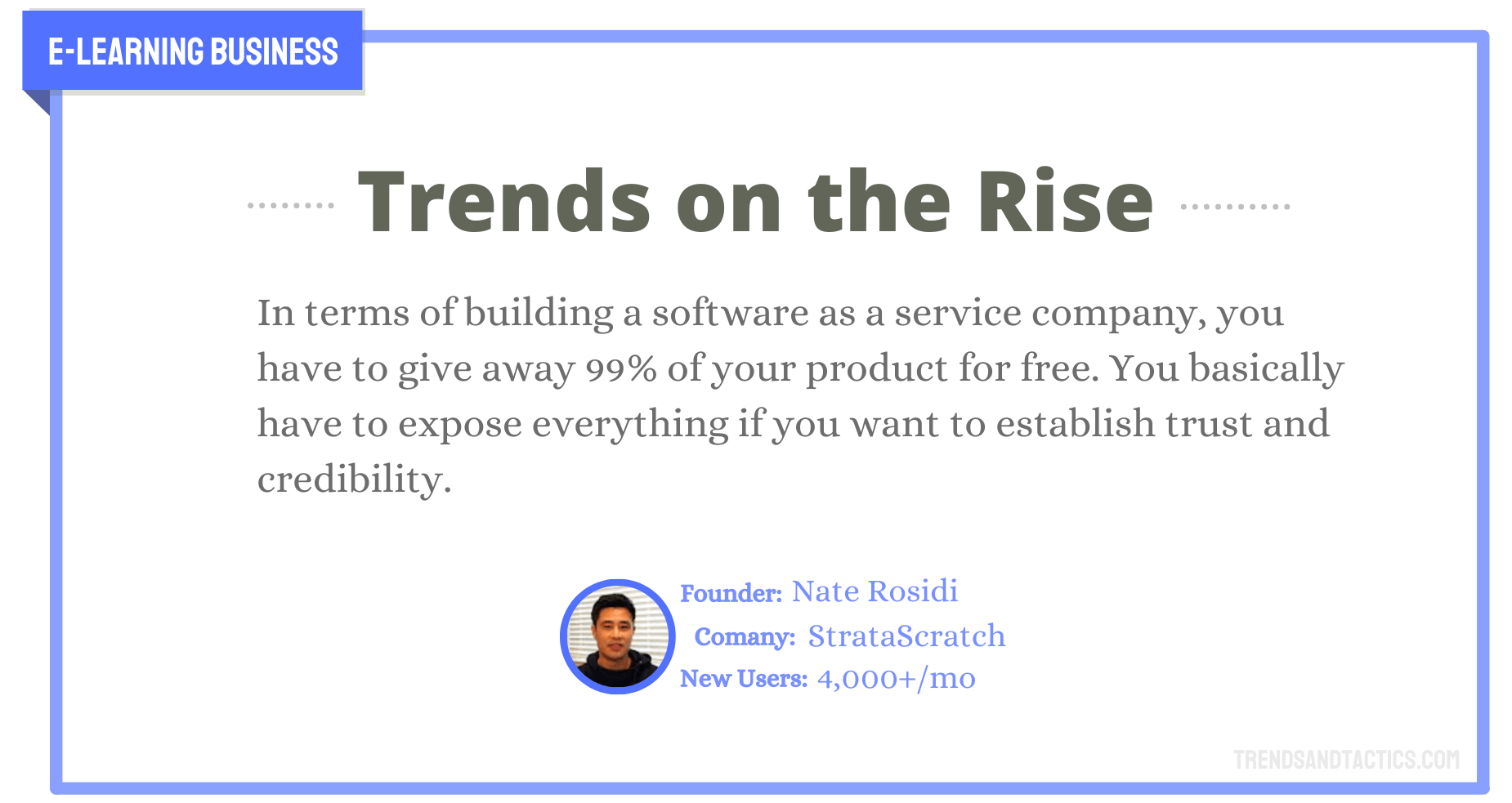
When you go to my platform right now, everything is exposed. You really don’t even have to pay for my platform if you don’t really want to.
There’s only two features you are potentially paying for. Premium features include the ability to use our solution validation engine to check your answers, and more access to our community such as discussion boards with the StrataScratch team and members.
I think this approach makes sense, because if you’re going to pay for something, obviously you want to know that you can trust the platform.
Since we are still building our brand, I have to show all my cards to really gain trust. Basically all software platforms these days offer a freemium product that exposes most of the product itself, because it’s such an effective way to grow.
What is the biggest factor that separates successful people from people who fail or never get started?
The biggest factor is grit.
The first few years of building the project, there were times I really wanted to quit. At one point, I told my friend this was going to be the last pivot, and if it doesn’t work I would probably change course.
So it was that perseverance to stick with it for four years and not give up.
You tend to solve a lot of problems over four years, and that’s what business is about.
On a high level, it’s making a product that people want or offering a service that people will pay for, and then finding solutions to all the unanticipated problems that pop up along the way.
There will always be new problems to solve, and oftentimes it won’t be in your wheelhouse, but you’re going to have to solve them in order for your business to succeed.
So people that are comfortable being uncomfortable on a consistent basis, succeed over those who run from those situations.
What advice would you give to someone just getting started?
I would do all my competitors research up front. When people come up with an idea, no matter how good it might seem, it’s important you have a solid understanding of what else is out there.
Has the idea been worked on already? What aspects did they focus on, and why did they focus there and not on something else?
You can answer a lot of questions with this approach. I would do market research to the point where I know the space incredibly well.
Then after that, I can find my starting point, and determine what differentiates my product from competitors. That’s the best place to start.
Once you get some traction, you can then start expanding the project from there.
How are things going today and what’s next?
StrataScratch is doing great today. In October 2021, we grew 10X in terms of users visiting the platform from where we started at the beginning of the year.
We have also serviced 50,000 users, and get about 4,000 new users a month.
There are also over 1,000 technical questions on the platform, and our goal is to keep that momentum going.
We’ll continue to release great frameworks so people can have something to guide them through the technical questions of data science interviews.
I’m also hoping to start expanding the platform to include other types of questions.
For example, as a machine learning engineer, you need to know the first principle of software engineering. So we’re going to start adding some questions in that category, which potentially overlaps a little bit with our competition.
But I feel like now is a good time to do it, because there’s demand from users for it. So we’ll be adding that shortly.
Other than that, we’ll keep growing in terms of content and services to the point where you’ll be set for your first five years as a data scientist.
What have been the most influential podcasts, books, or other resources?
The podcast Indie Hackers gave me a lot of inspiration, and made me feel like I could do this.
The podcast was great, in terms of providing motivation, because the interviews are with people doing it on their own (a.k.a. Indie Hackers). In other words, they are bootstrapping, and not getting VC money.
Listening to that podcast showed we are all going through a similar journey and consistently solving problems.
But hearing how they worked through the problems helped a lot. I was listening to the podcast every week.
In terms of books, I really enjoy autobiographical books about entrepreneurs.
One of my favorites is called, “The Hard Thing About Hard Things” by Ben Horowitz.
He is one of the Legends of Silicon Valley, and learning about what he went through was very inspirational.
The framework in “The Lean Startup” was helpful too, although it might be getting a little outdated. Still, it was a good step to learning about how to build software.
Where can we go to learn more?
StrataScratch is the best place to connect with me. We post blog articles every other day, so that’s where most of my writing goes.
Occasionally, I’ll do op-eds about my career and other educational content. You can also find StrataScratch on all the social media platforms as well.
Jack Brewer is passionate about all things personal finance, and enjoys testing out new side hustles and investing strategies.
